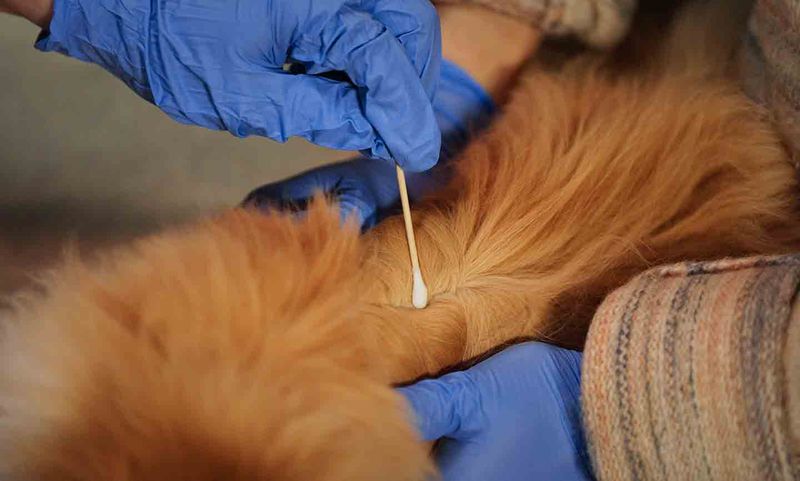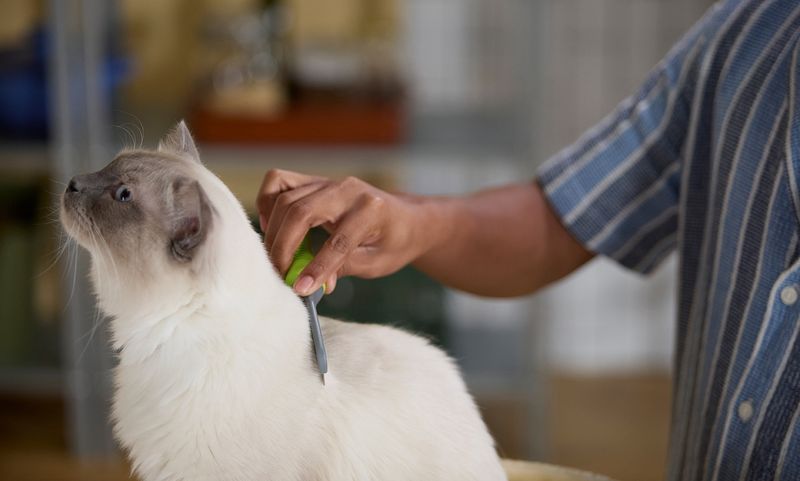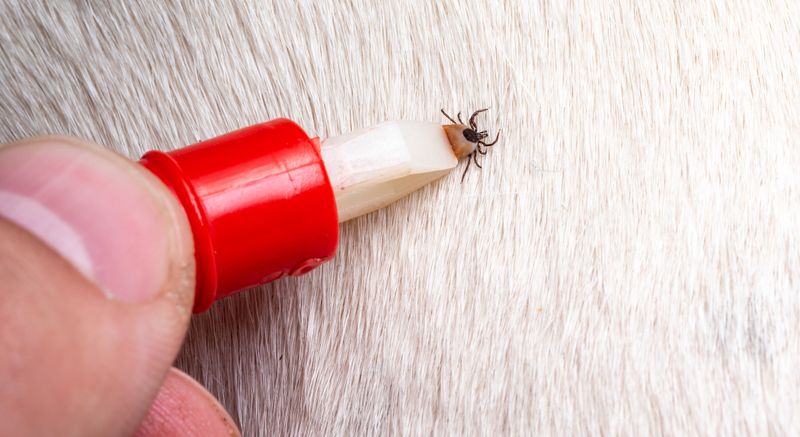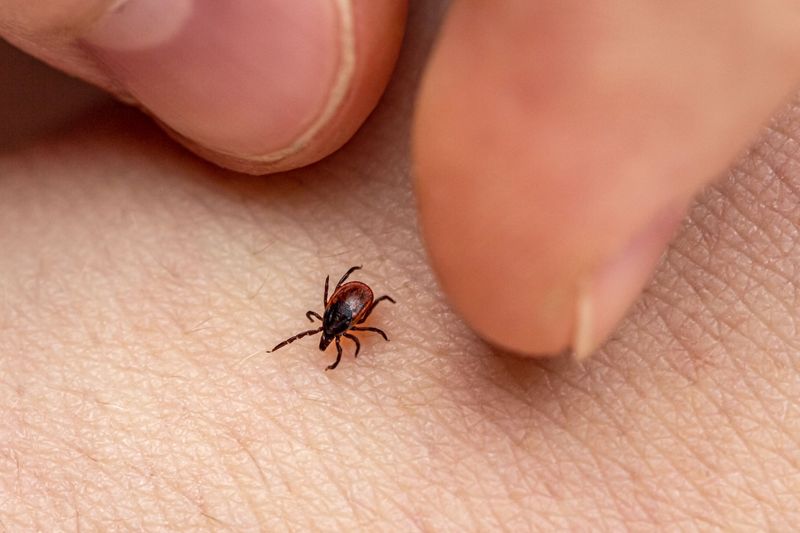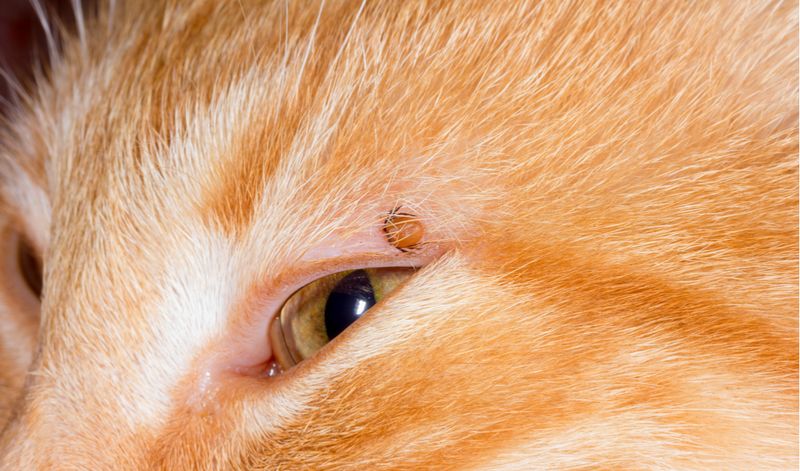📖 Table of Content:
Ticks pose a serious health risk not only to outdoor cats but also to indoor felines who occasionally venture outside or come into contact with other pets. These tiny, blood-sucking parasites can transmit dangerous diseases such as Lyme disease, cytauxzoonosis, and tularemia. The earlier a tick is spotted and removed properly, the lower the chances your cat will experience complications or infection from a tick bite.
Many cat owners feel nervous about removing ticks themselves, worrying they might hurt their pet or leave part of the tick behind. Fortunately, with the right tools and careful technique, tick removal can be safe and relatively simple. Veterinarians emphasize that knowing the proper method reduces the risk of inflammation or illness while making the experience less traumatic for both you and your feline friend.
In this guide, we’ll walk you through nine vet-approved steps to remove ticks from cats with ease. Each step is designed to ensure effectiveness, safety, and comfort throughout the process. Whether you’re a seasoned cat parent or a new pet owner, mastering this skill will boost your confidence in handling one of the more unpleasant but necessary parts of pet care.
1. Gather the Right Tools
Every successful tick removal begins with preparation, so having all necessary supplies ready is key. Rather than scrambling mid-process, prepare a clean workspace, ideally with good lighting. Equip yourself with fine-tipped tweezers or a specially designed tick removal tool—both are suitable for the task. Wearing disposable gloves is recommended to protect yourself from potential tick-borne diseases. Rubbing alcohol or an antiseptic will be essential for cleaning both the bite site and the tool afterward. A sealed container or jar will allow you to preserve the tick in case veterinary examination becomes necessary. And don’t forget treats—having something to reward your cat afterward can make the experience more positive.
2. Restrain Your Cat Gently
Keeping your cat calm is essential for safe tick removal. Instead of forcefully holding your pet, wrap them gently in a towel, leaving only the head exposed. This method not only keeps the cat still but also offers a sense of security, reducing stress. Ask a friend or family member to assist you by holding the cat, especially if your feline tends to squirm or resist. Use a calm, soothing voice to keep the environment relaxed. Never try to rush—take your time and ensure your cat feels as safe as possible. Remaining composed yourself will help your cat mirror that calm energy.
3. Locate the Tick
Scanning your cat thoroughly is a crucial next step in the process. Focus on areas where ticks like to hide, such as behind the ears, under the collar, near the tail, and between the toes. Feel for small bumps with your fingers, and use your eyes to inspect any suspicious dark spots. Some ticks may resemble skin tags or scabs, so careful attention is required. Utilizing a fine-toothed comb can also assist in separating fur for a clearer view. If necessary, use a flashlight to examine hard-to-see areas. Once located, avoid touching the tick directly with your fingers.
4. Grasp the Tick Properly
Securing the tick at the right point makes all the difference in preventing complications. With tweezers or a tick remover, aim to grab the tick as close to your cat’s skin as possible. This ensures you’re gripping the mouthparts, not the body, which can rupture and spill infectious material. Firm but gentle pressure is critical—don’t yank, but don’t hesitate either. Refrain from twisting the tick, as that can cause it to break apart. It’s important to remain steady during this step to avoid alarming your cat. A successful grasp leads to a cleaner, more effective removal.
5. Pull Out the Tick Slowly and Steadily
Removing the tick is the core of the process and must be done with care. Pull the tick upward in a straight motion, applying consistent pressure. Avoid jerking or twisting, which might leave parts embedded in the skin. If resistance is felt, maintain a steady hand—ticks often cling tightly. The goal is to remove the entire parasite, including its head and mouthparts. Use patience; a rushed movement can turn into a veterinary visit. Once the tick detaches, place it immediately in your prepared container.
6. Examine the Site and the Tick
Evaluating both the tick and the bite area is a necessary follow-up. Look closely to confirm the tick is whole, with its legs, body, and mouth intact. If the tick appears incomplete or if your cat’s skin shows redness or swelling, contact your vet. Any remnants left in the skin could lead to irritation or infection. Inspect the bite site for any signs of pus, excessive bleeding, or discomfort. Checking the tick itself can also give clues about the species, which helps in determining potential disease risk. It’s a small step that can prevent larger health issues.
7. Disinfect the Area
Cleaning the area where the tick was embedded ensures your cat’s skin heals properly. Dampen a cotton ball or swab with rubbing alcohol or a pet-safe antiseptic solution. Gently dab the wound to kill any remaining bacteria. Avoid using products containing hydrogen peroxide unless directed by your vet, as they can irritate feline skin. For sensitive areas, plain saline solution can be a milder alternative. After cleaning, monitor the site for several minutes to make sure there’s no unusual reaction. A quick cleanse goes a long way in promoting recovery.
8. Save the Tick (Optional)
Preserving the tick may seem unnecessary, but it can be very helpful later. Store it in your container with a bit of rubbing alcohol to kill and preserve the parasite. Label the container with the date and location on your cat’s body where it was found. In case your cat starts showing unusual symptoms, your vet can use the tick for diagnostic purposes. Some clinics may test the tick for pathogens like Borrelia or Cytauxzoon felis. Keeping this evidence can speed up treatment if something goes wrong. It’s a precaution many professionals recommend.
9. Monitor Your Cat
Post-removal care is just as vital as the removal itself. Over the next few days, observe your cat for changes in behavior, appetite, or energy levels. A sudden drop in activity or signs of fever could signal a tick-borne illness. Watch the bite site for swelling, discharge, or persistent redness. If any of these symptoms occur, don’t delay in contacting your veterinarian. Logging daily observations can help track changes you might otherwise miss. Quick detection often results in better treatment outcomes.


